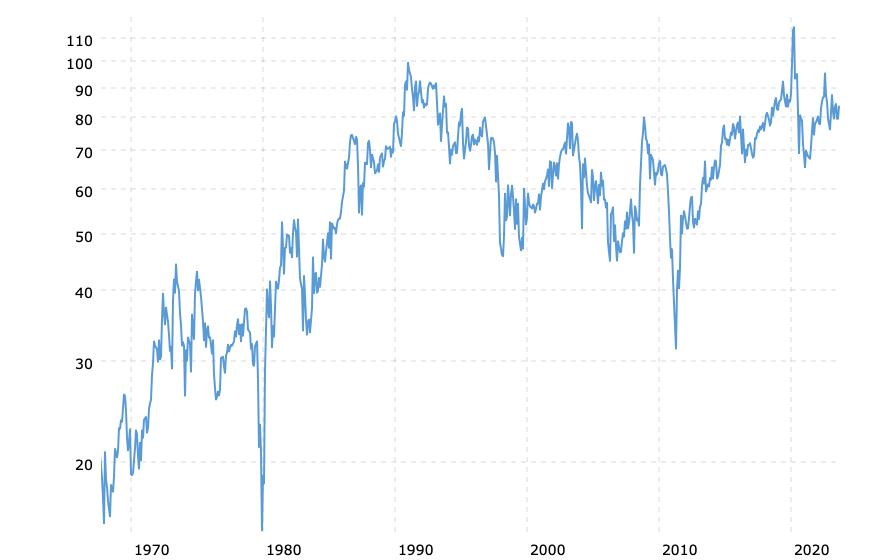 SILVER NOT UNDERPRICED
SILVER NOT UNDERPRICED
Silver bulls have for decades made the argument that the white metal is underpriced relative to gold. Their enthusiasm is fueled by expectations for a return to the original fixed ratio of 16:1 in favor of gold.
Using both metals’ current prices as a guide, if the ratio were to return to 16:1, silver would need to be $120 oz. when calculated using the current gold price of $1918 oz.
There are some who are predicting that the silver price could in fact move explosively higher very quickly and that $120 oz. is a very realistic price target. It is not likely though, that a move in silver of that magnitude would happen absent any concurrent action in the gold price.
More realistically, both metals would move up in price strongly with the momentum favoring silver; at least in this scenario. A commonly quoted upside target for gold is $3000 oz. so, let’s use that number and recalculate the ratio.
Doing so, the ratio still drops favorably for silver, although not as much as before. With gold at $3000 oz. and silver at $120 oz., the ratio would be 25:1.
I don’t think silver bulls would complain about that; but, is it reasonable to expect anything like that to happen? I don’t think so; and, here’s why….
GOLD IS MONEY; SILVER IS A COMMODITY
“The basic value of either gold or silver stems from its primary fundamental. This means that gold is valued for its role as real money and silver’s primary value stems from its use in industry.
Gold is real money, first and foremost, but it also has industrial applications. Silver is primarily an industrial commodity that has a secondary use as money.” (Gold And Silver – Fundamentals Be Damned)
As original money, gold reflects the loss of purchasing power in the U.S. dollar by moving higher in price. As long as the dollar continues to lose purchasing power, the price of gold will continue to rise over time.
That being said, it is unrealistic to expect silver, which is primarily an industrial commodity, to match or approximate the price increase in gold since silver’s primary fundamental is different from gold and unrelated.
GOLD/SILVER RATIO IS A MYTH
In the Mint Act of 1792, the U.S. government arbitrarily chose a 16:1 ratio of the gold price to the silver price. The actual prices were set at $20.67 oz. for gold and $1.29 oz. for silver.
At various times after that, the market price for silver was either higher or lower causing the U.S. government to engage in a comedic series of price supports and price suppressions.
In 1915 the gold to silver ratio was at 37. Four years later, it was at 17. By 1940, two full decades later, the ratio was at 97.
Beginning with U.S. involvement in World War II, silver’s primary value as an industrial commodity spurred a gradual decline in the ratio that lasted for twenty-seven years, reaching a low of 16:1 in 1968.
After that, and coinciding with the opening of world markets for both gold and silver, the ratio proceeded to climb all the way back to near 100:1 in 1991.
Silver investors who are depending on a declining gold-to-silver ratio are betting that silver will outperform gold going forward. For nearly sixty years, though, the ratio has held above a rising trend line taking it to much higher levels. See the chart (source) below…
Gold to Silver Ratio – Historical Chart
Regarding the oft-mentioned gold to silver ratio:
-
Gold and silver are two different items with their own independent functions and uses.
-
There is no fundamental reason which justifies any particular ratio between gold and silver.
SILVER’S DEPRESSION-ERA LOW
For those who insist there is some correlation between the two metals, it might be more realistic to measure from Depression-era lows for silver rather than using the $1.29 oz. fixed price.
In March 1931 the price of silver was $.29 oz., having fallen along with other commodities over the decade of the 1920s. Silver’s price had declined seventy-five percent from its high of $1.13 oz. in June 1919.
The official price of silver was still $1.29 oz., so the amount of silver in a silver dollar was worth nearly eighty percent less than the official government price.
If we use $.29 oz. (a fully deflated price and only one penny off its all-time low of $.28 oz.) to measure silver’s price performance going forward, we find that in August 2020 at $29.26 oz. silver’s increase is now close to one-hundred fold and matches the one-hundred fold increase in gold.
Calculating a ratio for the two metals yields a considerably different result than the previous 16:1 number. When we divide the gold price of $20.67 oz. by $.29 oz. for silver, the result is a ratio of 71:1, rather than 16:1.
That compares favorably with the ratio of 70:1 resulting from the calculation using the August 2020 highs for both metals ($2060 oz. divided by $29.26 oz.); although the ratio is somewhat higher now, at 83:1.
CONCLUSION
Investors and others should reconsider any pronouncements claiming that silver is undervalued/underpriced relative to gold.
If, however, you think that there is merit in calculating and relying on any gold-to-silver ratio, please keep in mind the following:
-
Primary fundamentals for gold and silver are distinctly different and unrelated.
-
The ratio of gold prices to silver prices has trended higher in favor of gold for almost sixty years.
-
The gold-to-silver ratio will continue to widen in favor of gold as long as the US dollar continues to lose purchasing power.
-
Price action of both gold and silver when measured from Depression-era lows is comparably equal.
(also see Silver Is Trapped Below $30 and Gold Leaves Silver In The Dust)
*********





